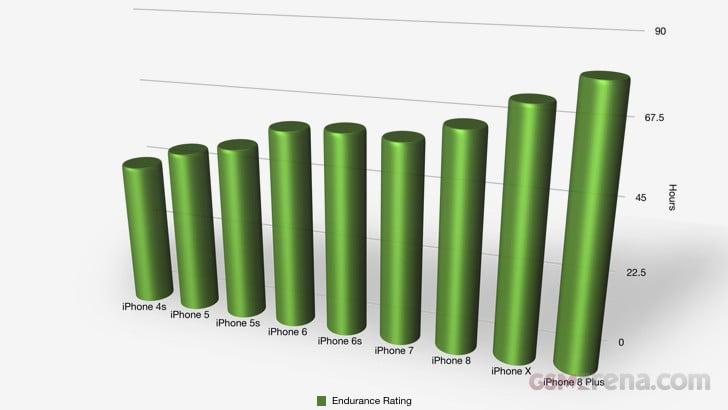Its a quixotic demand we make of our smartphones – we want the power of a super computer with the battery life of a Amazon Kindle in our pockets. Nothing promotes more debate and fills our comments section faster than the subject of battery life. No matter how much we wax lyrical about the latest hardware included in our devices the battery technology has hardly changed.
Taking the last 6 years of iPhone models, using data from the results of our battery life tests, you can see that while battery life is being eeked out, it’s not the dramatic exponential growth that we would see if charted CPU performance for example.

iPhone endurance battery chart since 2011 iPhone 4s
It’s become the norm to accept that our devices will last 1-2 days at best, with some manufactures avoiding the subject altogether. During the September 12 iPhone announcements Phil Schiller never mentioned battery life for the iPhone 8 and iPhone 8 once, with the focus instead being on the long overdue wireless charging capabilities. Phil did only talk about battery life when announcing the iPhone X, stating that it had an extra 2 hours of battery life over the iPhone 8 which in truth is actually provided by the extra 895 mAh battery capacity.
Lithium Ion batteries that can be dated back to the 1970’s were commercialized in the early ‘90’s and we’re still using them today. We need a battery revolution but don’t hold your breath for that, it could take another 10 years for the next generation of batteries to be powering our devices. This article isn’t about what will be powering the next generation of smartphones but what’s likely to reduce the draw on the batteries that we have today.
In no particular order of priority, the notable battery hogs, outside of rogue apps, are the display, the radios and the chipset, so we’ll address those in order.
Display
It wasn’t always the case, but we’ve almost reached a tipping point where AMOLED is more power efficient than LCD. It’s a complex subject and even harder to measure as you have to take into account not only screen brightness but APL (Average Picture Level) which is based on what’s actually being displayed.
Ideally, at this juncture, we would provide a sexy graph or figure comparing LCD and AMOLED power consumption. The reality is that there are so many variables involved that this is nigh on impossible.
To illustrate this, let’s take the iPhone X and iPhone 8 Plus. Excluding the screen, these two have identical innards. Even the batteries are have a difference of a mere 25 mAh in favor of the iPhone X. However, in our battery tests for Web browsing and Video playback the iPhone 8 Plus bests the iPhone X by just over 3hrs and just under 3hrs respectively. That could be because the iPhone X has more pixels have to push or there might be some inefficiencies due to the layered battery introduced in the iPhone X. Or is it Face ID that’s a battery hog? We feel we could go on but the point is clear.
[“Source-timesofindia”]










